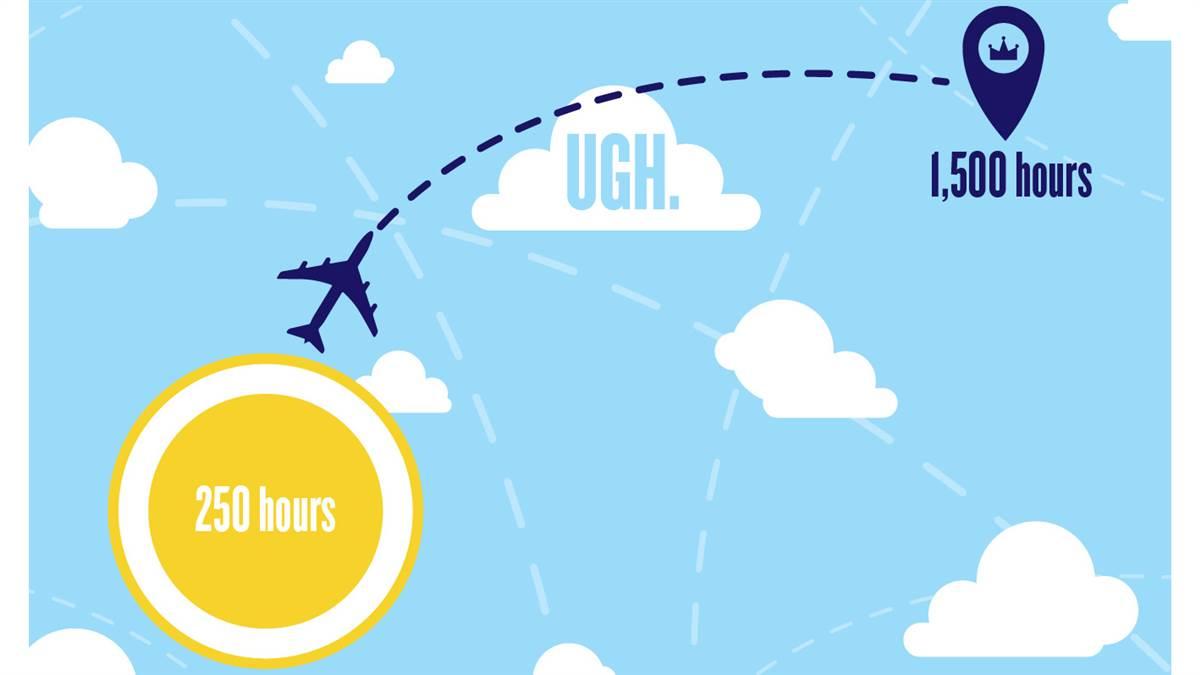Career pilot: The gap
Getting to the coveted 1,500-hour mark

The conventional route has been logging the hours as a certificated flight instructor, which could take a long time sitting around the neighborhood flight school waiting for a new customer to walk through the door. Now, with comprehensive training programs being offered by some flight academies as well as an ever-growing number of airlines, students can go from zero to ATP in two to three years by earning their FAA certificates and ratings and then providing instruction at the school where they once were students. In many instances, a regional airline will extend a provisional offer of employment at 1,000 hours of flight time or less. When they reach the magic 1,500-hour number, off to a regional airline they go.
That’s all well and good for folks who have access to $75,000 to $100,000 or more and can devote full-time energy for a couple of years prepping for a career path, but what about the pilot who has another job, car payments, and maybe a family to feed? What follows are merely some thought starters.
Fly for an air carrier. An interim career track relatively few aviators consider is flying for a Part 135 charter operator. Many on-demand carriers such as Red Tail Aviation in Utah fly only single-engine VFR flights, which require simply a commercial certificate and 500 hours. The popular Cape Air advertises first officer positions in multiengine aircraft with only 500 hours required.
Once hitting the 250-hour mark required for the commercial certificate, it seems it will take forever and a day to tally 1,500 hours.After graduating from Embry-Riddle Aeronautical University in Prescott, Arizona, Willow Seward went to Hawaii to fly Cessna Caravans for Mokulele Airlines. There, occupying the right seat as second in command, she went from about 300 to 1,000 hours in a year and is now flying for Mesa Airlines. To fly as second in command, FAR 135.245(a) only requires a commercial certificate with instrument rating. A considerable amount of SIC time can be counted toward the ATP certificate requirement (see “Logging SIC Time,” p. 51).
Join or start a flying club. It is the rare aspiring flight professional who has the wherewithal to purchase a Cessna or Piper for the sole purpose of time building. Joining a local flying club might provide more finances-friendly flying options. No flying club nearby? Start one. Gather a half-dozen or so like-minded flyers, each put some cash in the kitty for a down payment on a 1990s-vintage Skyhawk or Warrior, and enjoy the skies for a lot less than the going rental rate at the local FBO. Need help in launching such an enterprise? Engage with the AOPA’s You Can Fly initiative, which features a cadre of regional ambassadors who help “plant” new flying clubs around the country and assist with insurance, incorporation, financing, agreements, budgeting, and more. Drop a line to AOPA’s Steve Bateman ([email protected]) and he will get you in touch with a nearby resource.
Charitable flight. Whether you own or rent, certain tax advantages can offset the cost of flying when you dedicate flights to the work of charitable organizations. Check with each organization for required pilot qualifications.
Angel Flight organizations and other patient transport nonprofits provide free transportation to qualified patients and their families to distant medical facilities, deliver supplies to disaster areas, and reunite families during desperate times.
A favorite is Pilots N Paws (pilotsnpaws.org). The Pilots N Paws website is a meeting place for those who rescue, shelter, or foster animals. Volunteer pilots who have access to airplanes and are willing to transport animals to refuge sign up and then are alerted via email to requests within their specified area of interest. There is never any pressure to take a flight and acceptance of a mission is voluntary.
Civilian support of military missions. Auxiliary organizations offer long-standing and important opportunities for civilian pilots to use their skills in support of military objectives.
Civil Air Patrol (gocivilairpatrol.com), a well-known institution that is considered the U.S. Air Force auxiliary, supports communities with emergency/disaster response; aviation and ground services; youth development; and promotion of air, space, and cyber power. Benefits include quality training and an ability to fly CAP aircraft, which include late model Cessna 172 and 182 aircraft, many with glass panels.
Unless residing in a coastal area, the work of the U.S. Coast Guard Air Auxiliary (cgaux.org) is generally unknown. Similar in some respects to the CAP, Auxair pilots are general aviation pilots who fly their own aircraft in support of Coast Guard missions such as search and rescue, waterways security and pollution control, impediments to vessel navigation, and more. Auxair pilots receive much the same training as regular Coast Guardsmen. In fact, according it its national policy, “When flying for Auxair under orders, qualified Auxiliary pilots, while assigned to duty, are considered to be Coast Guard pilots and Auxiliary aircraft, when assigned to authorized duty, are deemed to be Coast Guard aircraft.” As such, pilots who fly their own aircraft on Coast Guard missions are reimbursed fuel cost plus an additional hourly fee.
Miscellaneous flying. Searching social media and Google will reveal time-building opportunities in pipeline patrol, taking parachute jumpers to altitude, or traversing the countryside taking photos. Perhaps start your own aircraft lease, banner tow, or airplane ferry service.
The journey to a high-paying aviation career as an airline pilot is costly in large part because of the time-building requirements. If you are on the verge of making that commitment, the aforementioned ideas may provide an alternate path forward to put good time in your logbook that, hopefully, will not break the bank.


